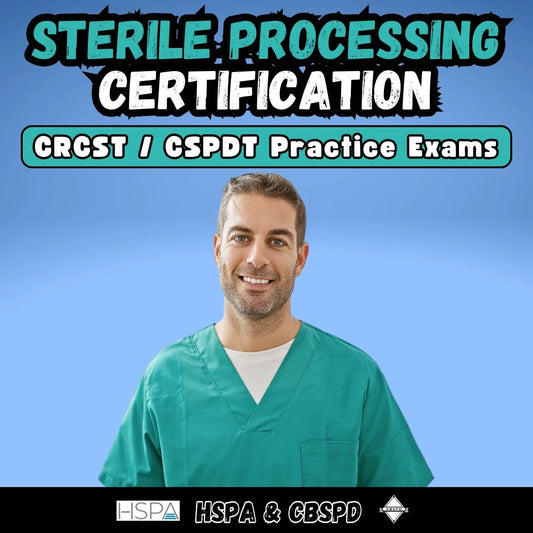Physical Parameters in Sterilization

Sterilization is a critical process in healthcare settings that aims to eliminate or inactivate microorganisms from medical devices, instruments, and equipment to prevent the transmission of infections. Achieving effective sterilization requires careful consideration of various physical parameters. In this article, I delve into the significance of physical parameters in the sterilization process and their role in ensuring successful microbial inactivation.
Understanding Physical Parameters
Physical parameters in steam sterilization refer to the measurable factors that directly influence the efficacy of the sterilization process. These parameters include temperature, pressure, and time. Each parameter plays a crucial role in achieving the desired level of microbial inactivation or elimination. Controlling and monitoring these physical parameters is essential to ensure the effectiveness of the sterilization process.
Temperature:
Temperature is a fundamental physical parameter in sterilization. Different sterilization methods require specific temperature ranges to achieve microbial inactivation. For example, steam sterilization typically utilizes temperatures between 121-134 degrees Celsius (250-273 degrees Fahrenheit). The appropriate temperature ensures efficient sterilization while minimizing the risk of damage to sensitive medical devices.
Pressure:
In certain sterilization methods, such as steam sterilization, pressure is a critical parameter. Higher pressure allows for increased steam penetration into the device ensuring comprehensive decontamination. Pressure variations may impact the ability of the sterilizing agent to reach critical areas, potentially compromising the effectiveness of the sterilization process.
Time:
The exposure time to the sterilizing agent is another crucial parameter. It determines the duration required for the sterilization process to achieve microbial inactivation. The appropriate time ensures sufficient contact between the sterilant and microorganisms, providing ample opportunity for their elimination. Deviation from the recommended exposure time may compromise the sterilization outcome.
Monitoring and Controlling Physical Parameters
Sterilization processes require meticulous monitoring and control of physical parameters to ensure consistent and reliable outcomes. This involves:
Equipment Calibration: Regular calibration of sterilization equipment, such as autoclaves, ensures accurate measurement and control of physical parameters like temperature and pressure. Calibration helps maintain the integrity and reliability of the sterilization process.
Time Monitoring: Precise timing is crucial during the sterilization process. Timers or digital monitoring systems should be utilized to accurately track the exposure time and ensure adherence to recommended guidelines. Most sterilizers have built in receipts that print out at end of cycle containing the required physical parameters and their values.
Data Recording: Documenting physical parameters throughout the sterilization process is essential for quality assurance and process validation. Temperature, pressure, and time parameters should be recorded to provide evidence of compliance and identify any deviations or inconsistencies.
Regular Maintenance: Routine maintenance of sterilization equipment is vital to uphold the proper functioning of physical parameter controls. Regular inspections and servicing help prevent equipment malfunctions that could impact the sterilization process. Gaskets must be checked and changed periodically. Steam quality should also be checked consistently within your Clinical Engineering department.
All in all, there are many ways to assess and test a sterilizer cycle, but physical parameters remains a key component to patient safety.
Share
Let customers speak for us
from 241 reviewsI took the practice test and I got a 91% on my certification exam!!
This course was the extra boost that I needed in order be confident in passing the exam. Thank you for all the information provided. I even refer to your notes while working.
Very helpful to me I can study any where at my own pace and low cost than going to school...I'm glad that there is something like this online to help anyone who want to pursue their career as a sterile processing tech.
I loved it, it’s very informative and the questions are great, it’s a great resource to purchase if you want to prepare for your certification exam!
I’ve really enjoyed this course so far. It delivers the information in a straightforward, digestible way. The Sterile Guy has compiled a highly effective program. Thanks very much from one highly satisfied customer!
The practice exams are detailed and easy to navigate. Brandon continues to show his passion in this industry by sharing his knowledge with up-and-coming techs. I also recommend investing in his flashcards. It has helped me greatly. Thank you, Brandon!,
These practice quizzes really helped me get the hang of answering questions related to instruments and the processes of preparing them! I even bought them twice cause I ran out of time lol. Super helpful!
I recently completed the Sterile Processing Guy course online and was extremely impressed. The content was clear, well-organized, and easy to follow. It helped me better understand important concepts like decontamination, disinfection, and sterilization. I appreciated how practical and informative the lessons were, it definitely made studying for certification feel more manageable. I highly recommend this course to anyone pursuing a career in sterile processing!
I won’t lie, I failed the first time around. So I decided to buy this practice test and I passed with flying colors my second go. Highly recommend to anyone interested in the CER, it helped a lot!
The flash card quality is amazing! Bravo sir! The card quality is way above average, questions are great! I’m still learning, utilizing these cards and your practice tests. Thanks for all the info!
I passed the CRCST exam. Taking reg sterile guy practice test over and over definitely helped get the job done.
This certification prep course is a must. Great videos with a lot of information and plenty of of practice exams.
These flashcards are so helpful and well put together. Highly recommend!
I'm really happy that I purchased the SP practice exam. I love how if you answer the question incorrectly, the correct answer will include the page number of the text book to find the answer. The questions are literally based on the textbook. I suggested "The Sterile Processing Guy" to my friend that is studying for the exam as well.








